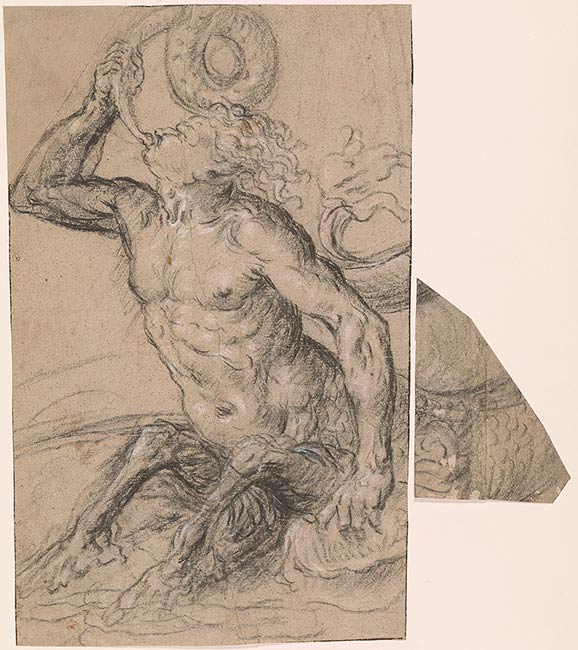
The drawing has been attributed to Bordone on grounds of style since it entered the collection in 1962, definitely a plausible attribution, and none other has been put forward. The purpose of the drawing is not known, though there are mermen found in the painting of the Presentation of the Ring to the Doge, painted in 1534 and now in the Accademia in Venice. There are also mermen found on the stone relief carvings ornamenting the platform on which the Doge and his council sit. A drawing of a young fisherman, indubitably connected with the painting, is at the Ashmolean Museum, Oxford (inv. 120; Rearick 1987, 51-52). This bears similarity in technique with the Triton, but the figure style is not similar enough to confirm the attribution of the Morgan drawing to the same artist. It has also been suggested that the drawing could date from much later, sometime in the seventeenth century.
When the drawing of the Triton entered the collection of the Library, it was glued down on all four edges, and an old loss in the upper left corner had been repaired with another piece of paper. When the drawing was released, it turned out that on the reverse of the corner repairs there was a missing triangular segment of the Triton’s tail. The missing corner was replaced with a new piece of paper and the tail mounted alongside the right edge of the drawing in its proper place.
Watermark: none.
Squire, Hugh N., former owner.
Fellows Report 1964, 89-90; Review of Acquisitions 1969, 133; Pordenone 2000, 12, no. 11; Rearick 2001, 93.
Adams, Frederick B., Jr., comp. Thirteenth Report to the Fellows of the Pierpont Morgan Library, 1963 & 1964. New York : Pierpont Morgan Library, 1964, p. 89.
Pierpont Morgan Library. Review of Acquisitions, 1949-1968. New York : Pierpont Morgan Library, 1969, p. 133.
